The Green Heart of Lucy Cole is a novel, my own still-looking-for-a-home novel.
The gist of it--
Still grieving her husband’s sudden death, Lucy Cole accepts the invitation of her college friend Isabel to join Isabel and her writing group for two weeks at a borrowed villa in an Umbrian hill town.
But the mix of women is unsettling from the start. Delia is a bestselling “beach book” author; Eileen, a bipolar poet; and Sydney, an ambitious younger novelist. Scrappy Isabel can’t help the occasional dig and Lucy struggles with unexpected moments of grief. Occasionally edgy critique sessions that include Sydney’s novel The Dare—whose main character, Blake, has been styled as a “Dr. Kevorkian of the soul,” as well as Eileen’s dangerously darkening mood add to the tension.
Then there’s Daniel, an Italian American painter who complicates matters further when he takes an interest in Lucy, recognizing her genuine love of art.
I’ll leave it at that because this post is really about how, around this time every year, I start dreaming of Assisi. Even after seventeen years, I still can’t believe I’m lucky enough to visit there every summer as a faculty member of Art Workshop International.
Such a cool program! Small. Writers, painters, playwrights, photographers. People a bit older than those in the usual arts programs—some accomplished, others working hard to get there, some just beginning. Serious but not competitive. No “hierarchy,” no separation of staff and students like you see at some conferences.
Every morning, we gather at the small, family-owned Hotel Giotto, just up the hill from the Basilica, where we share breakfast (and laugh a lot) on the terrace.
We’re back for a fabulous dinner each evening (more laughing), where we watch the almost-always spectacular sunset and, sometimes, bright gliders drifting down from Mount Subasio.
Then we take a walk through the town, through the commune, where teenagers and old folk alike hang out and, occasionally, there’s a band or a troupe of dancers or—yes—monks playing hackey sack. We move on, down past the pink and white Basilica of Santa Chiara, where we once came upon a bunch of people in medieval costume racing gargantuan wheels of cheese across the piazza.
Classes meet in the morning or afternoon, depending on the instructor—with two free days in the middle to explore beyond Assisi, though there’s plenty to see right there.
The Basilica with Giotto’s St. Francis frescoes and (my favorite) the saint’s ancient, patched wool cloak. Peaceful San Damiano, where Santa Chiara founded the Order of Poor Ladies in 1212. The remains of a Roman villa unearthed after the 1997 earthquake.
And gelato!
Anyway. If you’re a writer who wants to hone your skills, meet other writers, and hang out with people who “get” you—why not think about joining us this summer?
Just FYI: this would be the view from your window:
Now to the reason why this post is titled “The Green Heart of Lucy Cole.” Here’s the chapter that takes place in Assisi to give you a feel for the place. It’s a bit long, but I hope it will keep you engaged.
I’d love to know what you think of it.
And let me know if you have questions about Assisi!
Assisi rose before them, scrubbed white and gleaming in the noon sun. Lucy could see the Basilica of San Francesco at one end like the bow of a great ship about to set sail into the cloudless blue sky. On the other, she recognized the campanile of Santa Chiara. A medieval fortress perched on an emerald hilltop above it all.
Tour buses lumbered up Mt. Subasio tipping perilously—or so it seemed to her—into the turns. Isabel joined the parade, maneuvering Christine’s minivan deftly up the incline and into the already crowded parking lot just outside the city wall. They entered at the Porta San Pietro and wound their way down narrow cobblestone streets, past stone houses with flowers spilling from window boxes. Vegetation flourished in the crumbling walls and almost any sideways glance revealed an overgrown path, a cat or two sleeping in a stripe of sun between the buildings.
As they neared the Piazza del Commune, shops selling tourist souvenirs began to appear, as well as pizzerias and gelaterias. On Via San Francesca, which emerged from the piazza, slanting down towards the Basilica, the shops grew denser—and more expensive—their windows displaying clothes, leatherware, ceramics, jewelry, gourmet oils, and truffles.
“If St. Francis came back today, he could do the anti-materialism thing all over,” Isabel observed. “And the University of Perugia’s graduate program in ‘the science of tourism’ is here—in the shadow of the basilica, as it were. Don’t you love that? ‘The science of tourism?’”
She and Lucy strolled ahead of the others who stopped to linger here and there at shop windows, and the two of them settled on a bench set along the low wall near the Basilica. Pilgrims struggled down the cobblestone street on crutches; a group of elderly ladies gathered around a guide who waved a walking stick with a plastic daisy rubber-banded to the top of it. Lovers gazed dreamily at the flat façade of the upper church with its elaborate rose window; friends stopped to snap pictures of each other in front of the green patch of lawn upon which PAX had been spelled in neatly trimmed boxwood. Amidst the bustle of tourists, workers swept up bits of trash as quickly as it fell to the ground; friars dressed in the brown cowls of St. Francis’s time went about their business, heads bowed; a policewoman in a smart blue uniform—with a tall white helmet, a white leather shoulder bag, a white leather holster at her waist—stood, talking on a cell phone.
Lucy felt suddenly overwhelmed with the sheer pleasure of sitting on a bench in this ancient place. Watching Delia and Sydney drift down the Via Francesca toward the Basilica, Eileen straggling behind, she was struck by the sight of them in their big-brimmed straw hats, their long summer dresses— outfits similar to her own and Isabel’s. Women in hats, she thought. A certain kind of women, at a certain age—not young. And she thought of Eileen’s poems, how her young self lived inside them, surprised into being by small, seemingly insignificant bits of now.
The interior of the Basilica was drenched in color; Giotto’s famous frescoes charting San Francesco’s life lined the lower walls. Above them, tucked between windows and in the arched, geometrical spaces defined by the vaulted ceiling, more frescoes depicted stories from the Old and New Testament, each one bordered with rich Byzantine design. Pillars and buttresses bore faded, spotty evidence of similar design; the arches themselves were decorated with saints’ faces. Light fell through the high stained glass windows, their color complicating the paintings, puddling here and there on the marble floor.
It was lovely but, like the shopping street, it seemed to Lucy at odds with what St. Francis stood for. She paused a long time before the familiar image of the saint’s sermon to the birds. Against the background of a blue mountain, he bent toward the flock gathered at his feet, his right hand raised in benediction, his left, lowered, palm up, blessing them. A faded, ghostly bird coasted downward into the blue, drawing her eye toward the saint’s halo and to the monk who stood behind him, a witness to the saint’s oneness with the natural world.
“He was so good,” Eileen whispered.
Lucy turned, surprised to find both Eileen and Sydney beside her.
“He changed everything,” Eileen went on. “The church, I mean. He gave it a human face.”
“Actually, he was quite insane,” Sydney said. “Have you read accounts of his life? Visions, voices. Mortification of the flesh. Today he’d be on antipsychotics. Or depression meds, to help him deal with his middle-class guilt.”
Eileen was quiet a moment, then visibly drew herself up to respond. “You don’t think visions and voices—even guilt—might be given to some people by God for a reason? That it might be a sin to try to erase them?”
“I don’t believe in God,” Sydney said. “Or sin. So, no—I don’t believe that. But even if you are believer, why dwell on what you can’t change? Or control? Get over it, is what I think. Get a life.”
“But isn’t that how you make art, any art?” Eileen asked. “By dwelling on what you can’t understand, can’t get beyond?”
“It’s how some people make art,” Sydney said. “A kind of art, anyway. But isn’t real art informed by something way larger than any one person’s life?”
Eileen gave a pathetic little nod to acknowledge the truth of what Sydney had said. For moment Lucy was afraid Eileen might begin to cry. Instead, she attempted a smile and declared her intent to St. Francis’s tomb in the Lower Basilica. With a flutter of her hand, she disappeared into the throngs of tourists headed toward the staircase at the back of the nave.
Sydney sighed. “My God. She’s so—emotional. I’m not used to having to watch my words like you have to do around her. I don’t mean to upset her, but it seems I do—one way or another.”
“There are bound to be tensions in any trip,” Lucy murmured.
“Which is why I generally avoid traveling with so many people,” Sydney said. “It always turns out to be strange—and in some way you’d never have imagined.”
Screw you, Isabel might have said, if she’d been there.
But Lucy turned her attention back to St. Francis, determined to avoid the tension that had been simmering all morning, worried that her excursion with Daniel the day before might be the source of it. At breakfast, Delia had made much about having met him in the garden quite by accident, blushing prettily when she admitted he’d caught her, still in her dressing gown, admiring his roses.
“They’re just so fabulous,” she had said. “I was lying in bed, breathing in the scent of them through my open window and I simply could not resist going outside. So there I was, whirling around the garden and, when I looked up, he was watching me with this amused expression.” She sighed. “He always seems to come upon me when I am at my most—”
“Asinine,” Isabel had muttered.
Delia babbled on, oblivious. She seemed oblivious to the tension between Lucy and Sydney now, shouldering tourists aside to join them.
“Really,” she said. “There are so many paintings, I don’t know where to look. And all these people! I really need to go outside where I can breathe.” She started toward the door, then stopped and turned to Isabel. “But where are Eileen and Isabel?”
“Present.” Isabel appeared at Lucy’s side. “Jeez. I thought I’d never find you guys.”
“Eileen went to see St. Francis’s tomb,” Sydney said.
“You and Delia go on out,” Isabel said. “Lucy and I will find her.”
The Lower Basilica was dizzying, strangely cave-like—its walls covered with so many frescos painted in rich reds and blues and golds that Lucy hardly knew where to look. Arches painted in countless geometrical patterns or lined with the faces or saints or angels curved up to the vaulted ceiling. Side chapels—some splashed with sun from stained glass windows—held relics and treasures. Voices rose and fell from a chapel, where mass was being held, and there was a constant murmur of conversation, occasionally punctuated by “Silenzio” in a deep, whispery voice.
They found Eileen in the Chapel of Relics, the palm of her hand pressed against a glass case that displayed the worn, patched tunic of St. Francis. She looked up, startled, when Isabel spoke her name. Then her face dissolved into a beatific expression.
“He wore this,” she said. “I hardly know how to think about it. Something so old.
Something he touched. And it’s still here. I went down into the crypt, but it didn’t seem real to me. He’s there, I know. But—all that stone and wrought iron. And a Persian rug on the steps to the altar! It seemed, I don’t know, wrong. But then I found this: his robe. And, oh my God, look at the hair shirt he wore. So small. And these cloths used to wipe his forehead when he was dying.”
She turned toward Lucy, took her hand and clasped it so hard her knuckles went white.
“Now I know how you felt when you saw Natalia in the angel,” she said. “It’s scary, kindbof, feeling that—connection. But, at the same time, I want to stay right here in this place forever.”
“I know,” Lucy said. And she did, though she was frightened for Eileen, whose eyes seemed too bright in her excitement.
Later, on their way back to the car, Eileen turned at a sign pointing to Chiesa Nuovo. “Oh,” she said, turning into the courtyard.
“What?” asked Delia impatiently.
Lucy nodded toward a marker on the wall. The church had been built on the site of St. Francis’s family home. He had renounced his wealth in this place.
Lucy thought of Giotto’s fresco that had captured the moment. Francis’s angry father, the clothes his son has abandoned draped over one arm, the other restrained by a townsman. Francis, himself, defiant, naked but for the cloak the bishop holds around him, arms raised, face turned upward to the hand of God hovering in the sky. It had seemed to her, looking at it, that Pietro Bernardone might have been any father in any time, trying to talk his teenage boy out of ruining his life.
Sydney was right: Today, a kid like Francis would be in therapy. But it was so much more complicated than that, a reflection of the completely different ways of thinking about what life is, what it means. Giotto’s frescoes moved frame-by-frame from the moments leading to St. Francis’s conversion to the moment of his death. There was no backstory, nothing about his childhood, his life as a soldier, or his time of imprisonment in Perugia that might have explained what had transformed him from hedonist to saint.
The message was simple: Francis gave up his inheritance to serve the poor because a living God directed him to do it. It would never have occurred to him—or to the illiterate pilgrims “reading” his story in the frescos for hundreds of years after he lived—to question this. Nor did they question God’s hand in the events of their own lives.
To live without “why,” to accept the circumstances of her life as God’s will, never second-guessing choices and outcomes, was incomprehensible to Lucy. A fresco cycle of her own life would require a predella running along the bottom, small paintings that made the larger moments make sense—like flashbacks in a novel. There were so few definitive moments in modern life—and even they came tangled and blurred by the ghost of all that had delivered you there.
And it all happened so fast. She remembered making a graph of the Italian Renaissance painters during her docent training so she could understand where their lives and work overlapped. Along the side, she made a timeline in five-year increments, from 1240, the birth of Cimabue, to 1564, the death of Michelangelo. Across the top, she placed the artists’ names in order of their birth, from Cimabue to Raphael. She highlighted their life spans in blue, marked their productive years in yellow. When she completed the timeline, she saw the significant gap between the important work of Giotto and that of Sassetta. Saw the tragedy of Massaccio’s early death. Saw how Michelangelo’s long life had bridged the early and late Renaissance. It was useful, but unnerving. The more she looked at it, the more each life seemed no more than a narrow box of time, floating in the endless white space above and below it. Her own narrow life, floating in time, too.
She felt this now, entering Chiesa Nuova, where the the small barred cell in which St. Francis’s father had locked him up had been left in place. And following the arrows that led out the back door, down a staircase, and into a narrow passageway, where, looking up, she saw the arched door of the family home set into the wall above where she stood. She closed her eyes against a feeling of vertigo that came with the sudden image of the door opening in that other time, a boy hurrying down the stone staircase that had once been there, into the street.




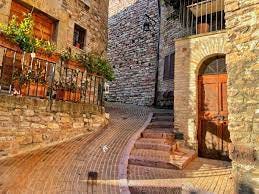
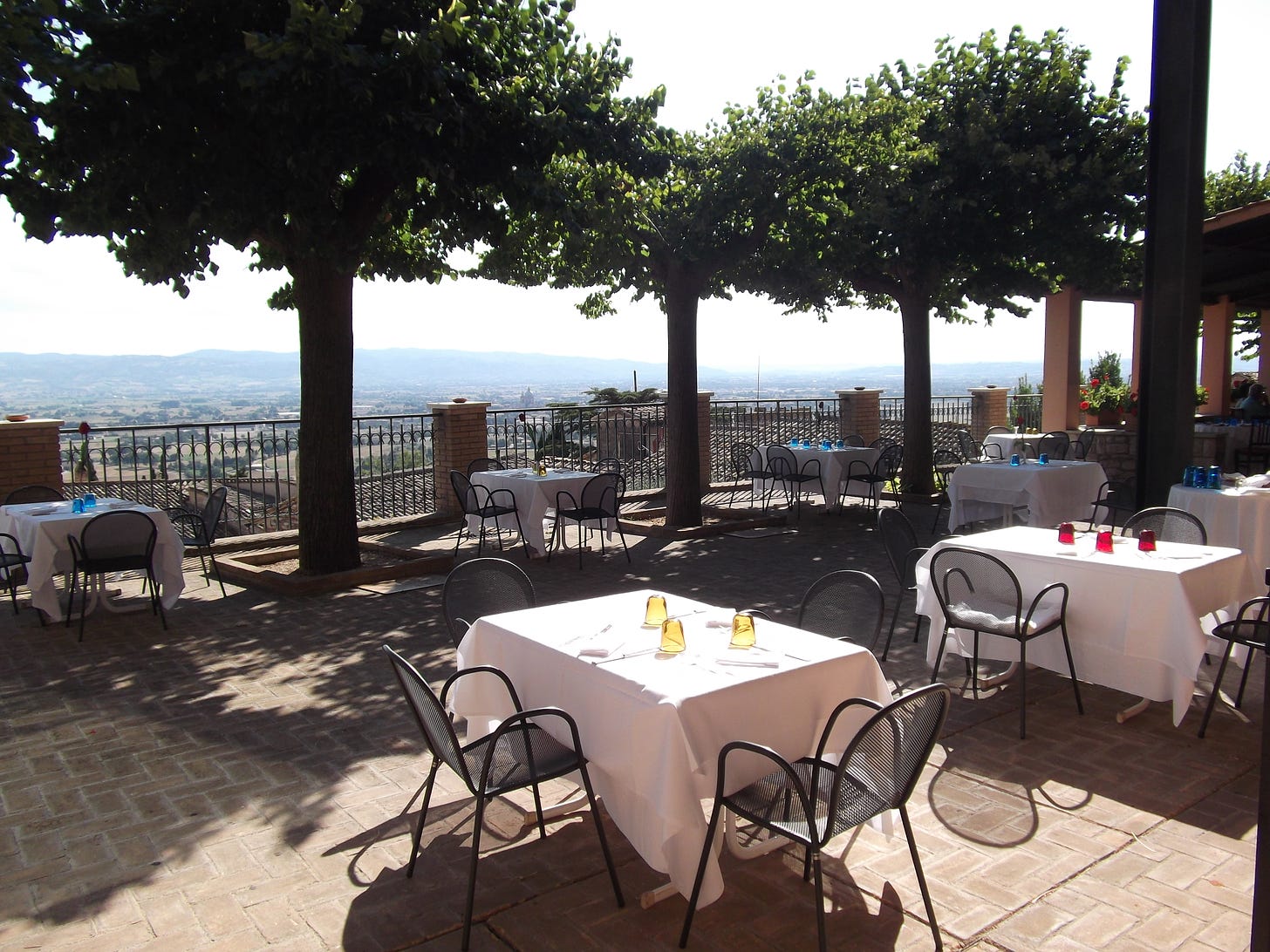
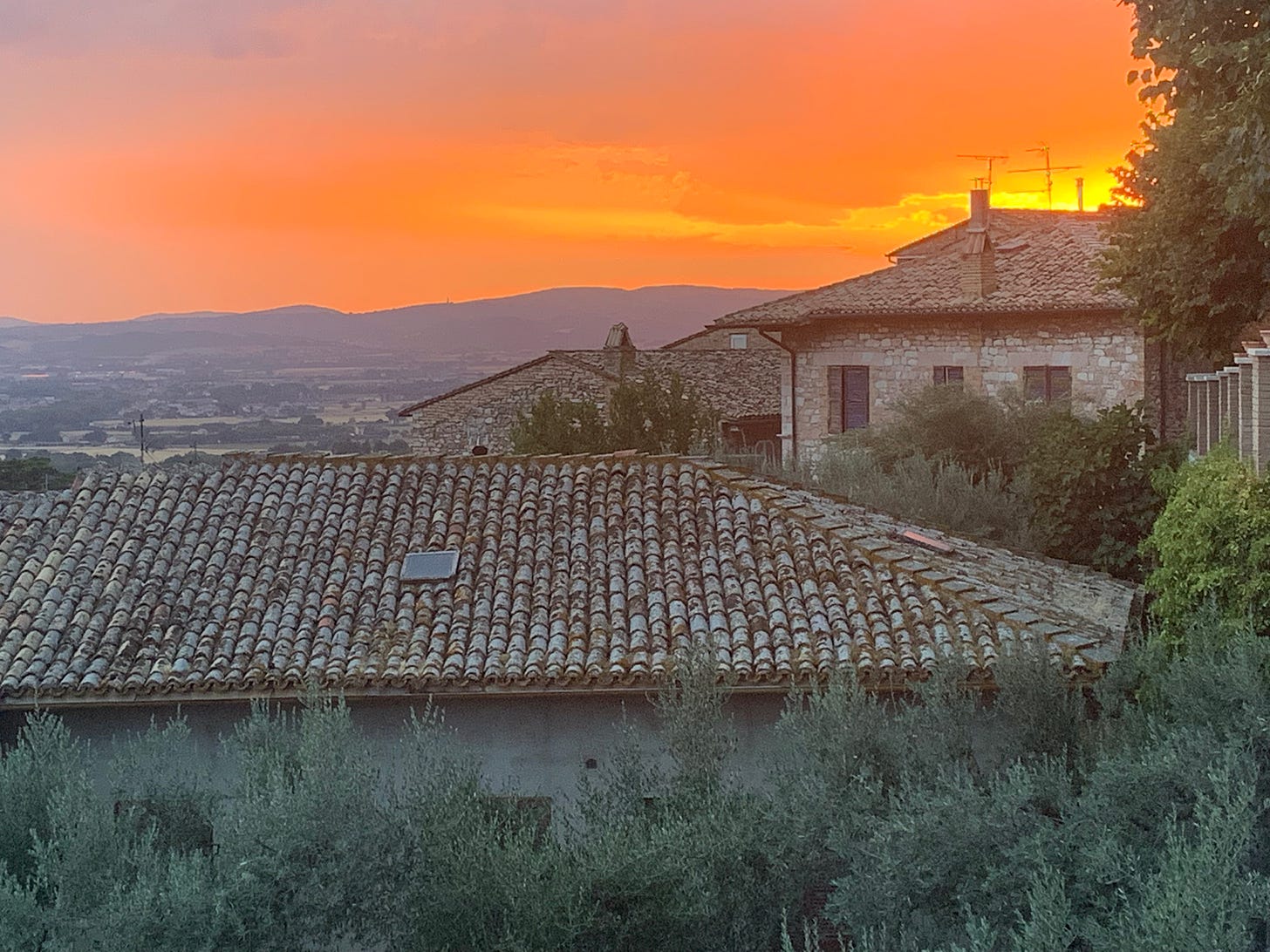
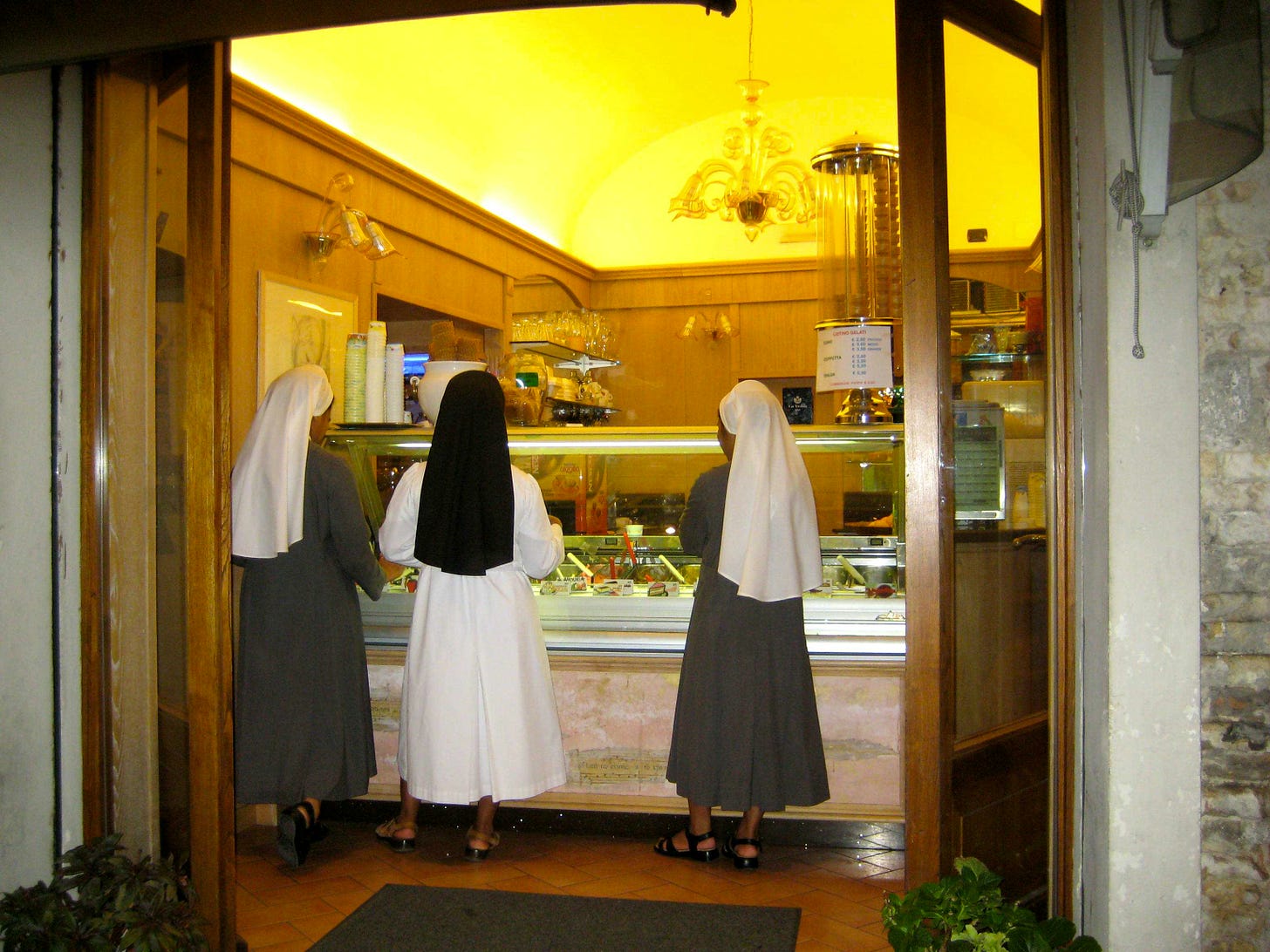
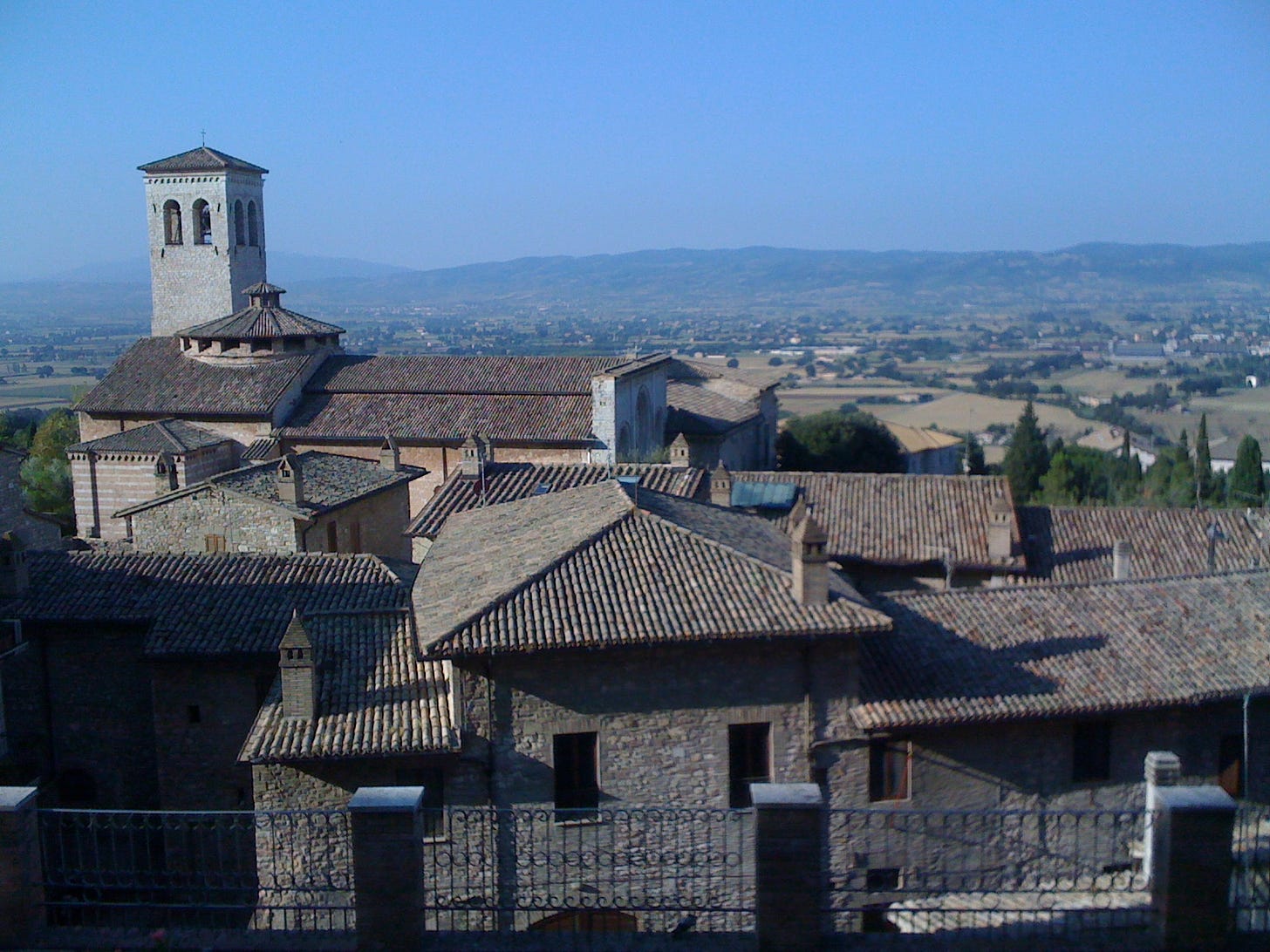
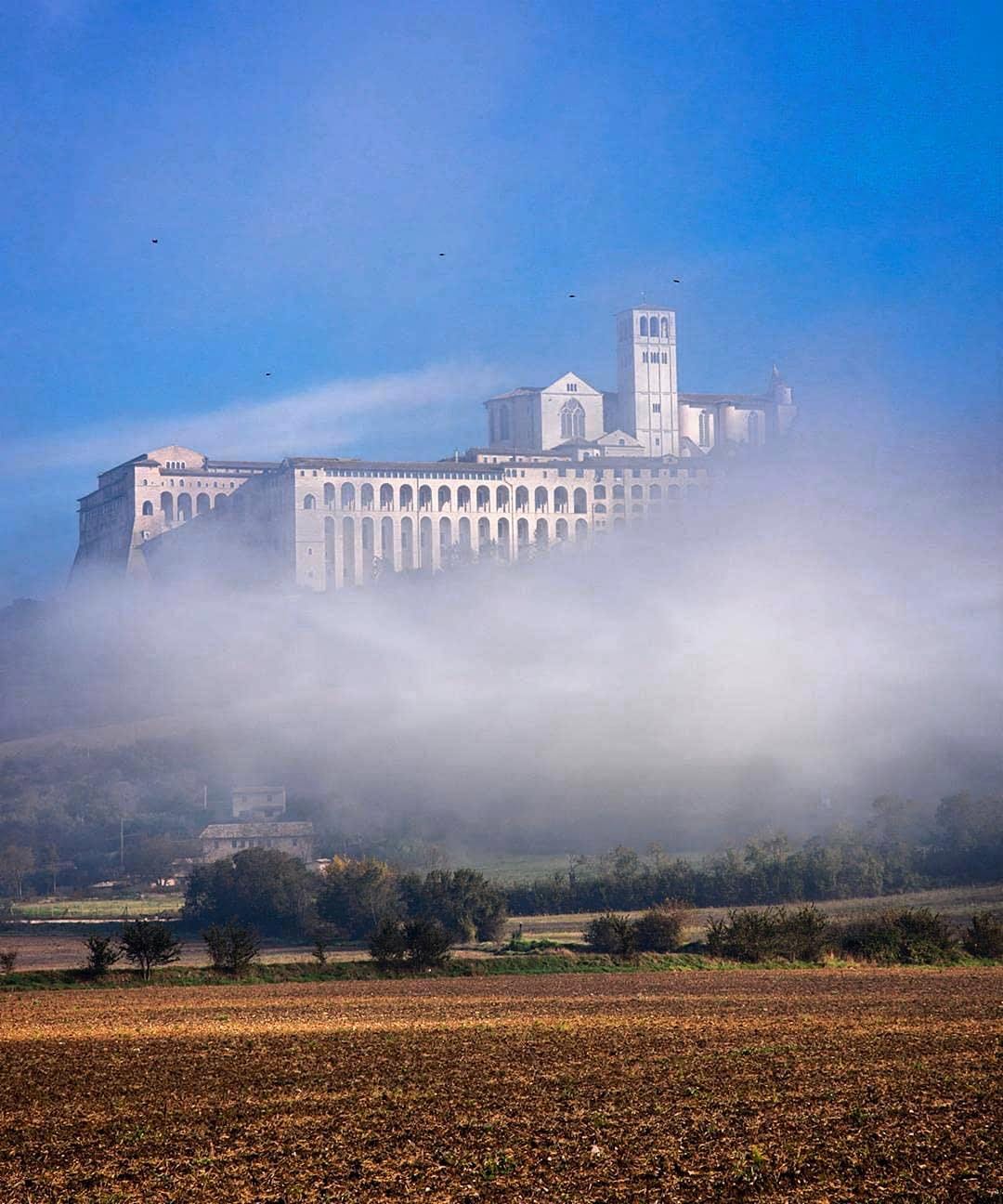
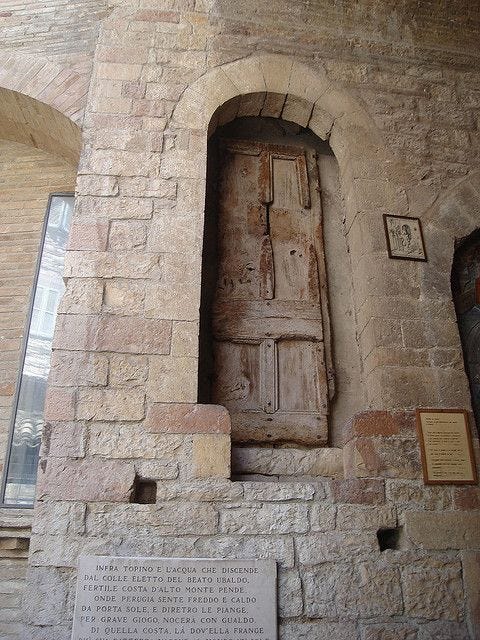
So glad you like it! You can read it any time you want. Just let me know. At the moment, reading it any other way isn't in the near future.
Thank you! I'd love it if you could come to Assisi!
Some of the photos are mine, others...not.